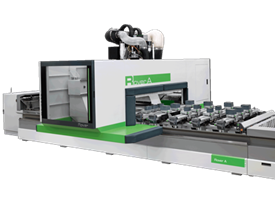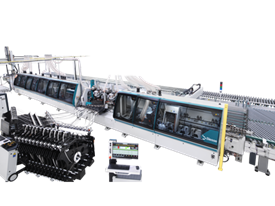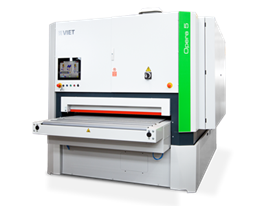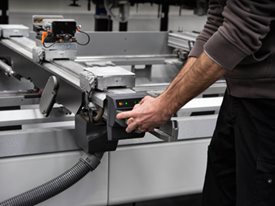The manufacturing industry relies heavily on Automatic Woodworking Machinery. With the introduction of CNC and automated machines, working has become easy.
So what are Automatic machines and how is it better than hand tools for woodworking?
Automatic Woodworking machine
CNC machining or Automatic woodworking machinery is widely used in the manufacturing industry, including operations that previously relied on engineer-operated equipment such as routers, shaping machines, vertical millers, and center lathes. A woodworking machine is a machine that is used to treat wood to create various objects, artifacts, and other items. These wood cnc machines are exclusively used in woodworking and are usually powered by electric motors. Grinding machines, which are often used to grind items down to smaller bits, are sometimes included in the definition of woodworking machinery.
Because of the numerous advantages of CNC machines, operator-required equipment has been substituted in some circumstances. CNC machining is used by a wide range of manufacturers in a variety of industries for fabrication and manufacturing purposes. It can make vast quantities of things traditionally made with a router, grinder, center lathe, vertical miller, or shaping machine in an efficient, timely, and exact manner.
A CNC machine controls machine tools such as lathes, routers, grinders, and mills using computer numerical control. The sort of software used to control the machine, which is uniquely customized and written with G-Code — a specific CNC machine language that provides precise control of aspects like speed, location, coordination, and feed rate, distinguishes Computer Numerical Control from normal PCs.
Why are Automatic machines better than hand tools for woodworking?
The fundamental difference between hand tools and power tools is that power tools are driven by a battery, electricity, gasoline, or compressed air and can either perform tasks that hand tools cannot or do them much more efficiently and correctly.
Hand tools are precisely what they sound like: tools that must be used with one's hands. Power tools have a source of energy that enables them to function without human involvement. You should consider having a number of tools available to you. A manual tool, such as a screwdriver, and a power tool, such as an electric screwdriver, will be required for certain projects. Here are some more details on such tools.
There are a number of parameters used to highlight the differences between the two instruments, but we'll concentrate on a few of them: speed, precision, consistency, energy sources, safety, cost, and so on.
1. Precision
There are two things to bear in mind when it comes to precision. While automatic woodworking equipment is more exact when it comes to repeating the same activity, hand tools are often more precise in their level of control. That is to say, if you need to drill the same hole into a piece of material repeatedly, you should use a drill press rather than a hand-held instrument.
2. Quickness
Power tools are significantly faster than hand tools in two ways. To begin with, there is the benefit of being able to do a single task more quickly. Cutting a board with a circular saw is significantly faster than cutting a board with a handsaw, for example. The second benefit is that you have practically limitless energy available to you. Power tools, unlike muscles, do not require nearly as much "relaxation time," allowing you to work faster and take fewer pauses. Power tools, as opposed to hand tools, allow you to do more work with less effort.
3. The operation's duration
While power equipment can be operated for extended periods of time, doing the same work manually with hand tools for the same amount of time might be challenging.
4. Source of Power
Where the energy to accomplish the operation comes from is the obvious distinction between manual and power tools. The majority of the energy in power tools comes from an external power source, whereas all of the energy in a hand tool comes from the tool operator.
A power source could be an air compressor, a power outlet, a battery, or gas. Even with most power tools, moving the tool, pressing it against the workpiece, or moving the workpieces around requires a large amount of energy (in the case of a router table, for example).
5. Security
When it comes to working, both power tools and hand tools have risks. Before using any tool, whether electric, manual, or gas-powered, be sure you have all of the essential safety equipment and take all of the necessary measures.
6. Reliability
While certain craftsmen can be quite consistent with hand tools, properly set-up machinery is usually the winner in this category. Take, for example, the task of boarding. The cut will almost always be slightly off if a novice cuts it with a handsaw (and in a different way). If you teach that same newbie how to safely handle a circular saw, he'll be able to cut multiple boards in a much more uniform manner.
7. Adaptability
CNC machining can produce nearly any component you can imagine. Some models contain special features and attachments, like touch screens and automated tool changeover, to help speed up and simplify the manufacturing process.
Major benefits that Automatic woodworking machinery provides over hand tools:
- Improves the precision of machining
- Allows for difficult activities and attention to detail.
- Produces manufacturing flexibility
- Increases the level of security
- Increases the volume of production
- Reduces the amount of time it takes to change out the configuration.
Hand tools have been in use for a long time before the invention of automatic woodworking machines, and they are still useful in some operations and hence cannot be ignored. Power tools, on the other hand, have essentially supplanted them in various activities because they do not tire out like people and allow for faster task completion with less effort.



.png)





 Worldwide
Worldwide
 Italia
Italia
 United Kingdom
United Kingdom
 Россия
Россия
 France
France
 中国
中国
 Asia
Asia
 Deutschland
Deutschland
 España
España
 Schweiz
Schweiz
 North America
North America
 India
India
 Australia & New Zealand
Australia & New Zealand
 Türkiye Cumhuriyeti
Türkiye Cumhuriyeti
 Middle East
Middle East
 Brasil
Brasil